Back in the day, “real” race cars didn’t have hood scoops. Instead they had an array of open injector stacks poking through the hood top.
Scoops were superfluous.
But then, Super Stock quickly became the rage.
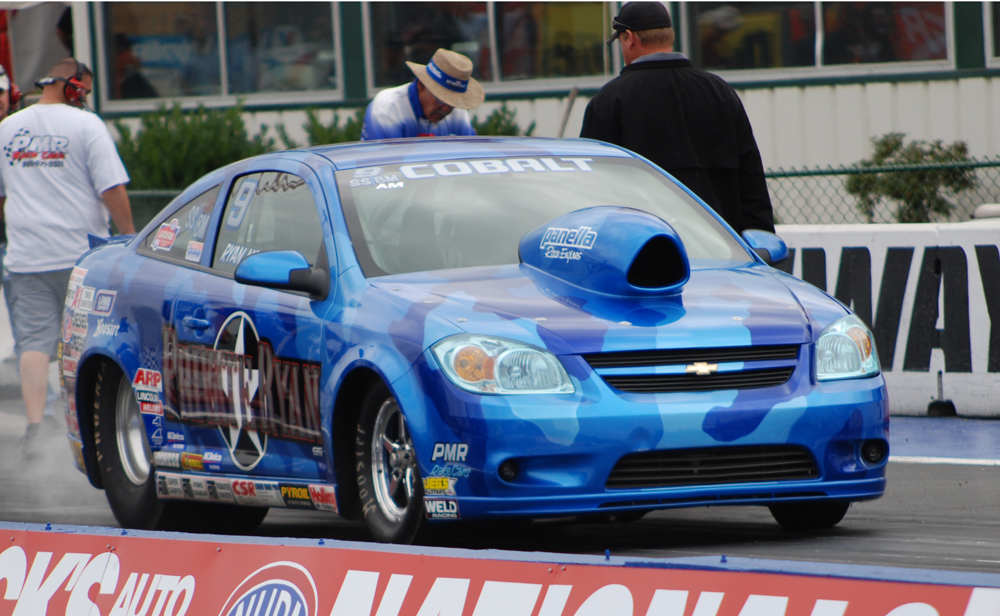
With racers struggling to find tenths (or even hundredths) of seconds, fresh air induction suddenly became important. Almost simultaneously, muscle cars became a hot commodity. Plenty of those cars came from the factory with cold air induction packages, and many of these cold air packages were for looks only. They weren’t truly functional hood scoops.
The early beginnings of Pro Stock brought us an abundance of different hood scoop designs, and to a certain degree, the influences came straight from Chrysler Corp. R&D. The Mopar bunch took the direct approach to cold air systems. Factory race cars, such as the 1968 Super Stock Darts and Barracudas, incorporated large forward-facing scoops. A year or so later, a slightly more sophisticated, but equally large scoop appeared on 1969 440 Six Pack cars.
These first Mopar-designed scoops relied on the “boundary layer” principle. With this arrangement, the opening of the scoop wasn’t flush with the top of the hood. Instead, the inlet was raised slightly to account for the air flow passing over the nose and hood of the car. A scoop with an opening flush with the hood surface was essentially mounted in dead air. Placing the scoop in direct line with moving air improved the “ram” factor.
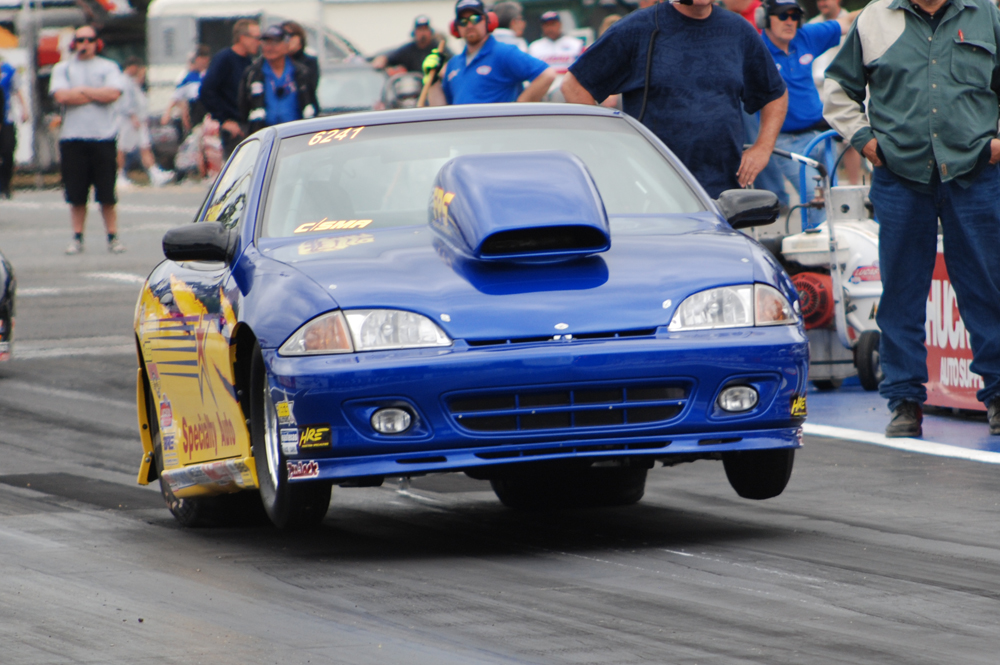
The Grump Factor
Others in the racing biz were paying close attention to the importance of hood scoops. Case-in-point is the late Bill Jenkins’ experimentation that eventually led to the renowned “Grump Lump,” a box-style scoop with a rear entrance. This would eventually evolve into a more-sophisticated hood scoop which made its debut on Jenkins’ last Vega Pro Stock car.
The Jenkins’ scoop was innovative for the time and heavily influenced hood scoop technology for years after. For example, the scoop sidewalls diverged toward the rear (seven degrees of slope, front to rear, according to Jenkins). This setup slowed the air upon entering the front opening, allowing for recovery within the hood scoop plenum.
Hood scoop height was a conundrum because NHRA Pro Stock rules dictated scoop height. Because of this, engine placement in the chassis and the overall height of the intake manifold plenum and carburetors were critical to the scoop layout. Initially, Jenkins attempted to reduce air speed and turbulence over the carburetors by modifying the internal walls of the scoop with an elaborate series of sheet aluminum panels. As you might expect, the back carburetor had little if any air velocity over it, but the front carburetor was still affected by the on-rushing air. To compensate, Jenkins carefully reworked each carburetor.
But Grump wasn’t done yet.
With the use of available flow bench equipment of the era, Jenkins figured out that the hood scoop opening should be as small as practical. Jenkins’ findings revealed that it was only necessary to have an opening large enough to feed the engine while the car was sitting still and producing full power—staging, for example. According to Jenkins’ published research (the Chevrolet Racing Engine by Bill Jenkins; SA Design Publishing Company; printed 1976), this opening size would be approximately 2-1/2 times too large when the car was at speed due to the ram air effect. Because of this, Jenkins added a small bell mouth to the scoop opening. Flow bench exploration on a stationary scoop determined that the bell mouth actually doubled the airflow capacity of the scoop. As a result, Jenkins’ new snorkel scoop made use of a much smaller physical opening.
It’s interesting to note that Jenkins also experimented with boundary layer airflow principles. His tests pretty much concurred with Chrysler’s findings: If the opening of the scoop was too large or too near the actual base of the hood, then the air would “stack up.” In effect, the air actually pushed backward against the floor and out of the scoop opening.
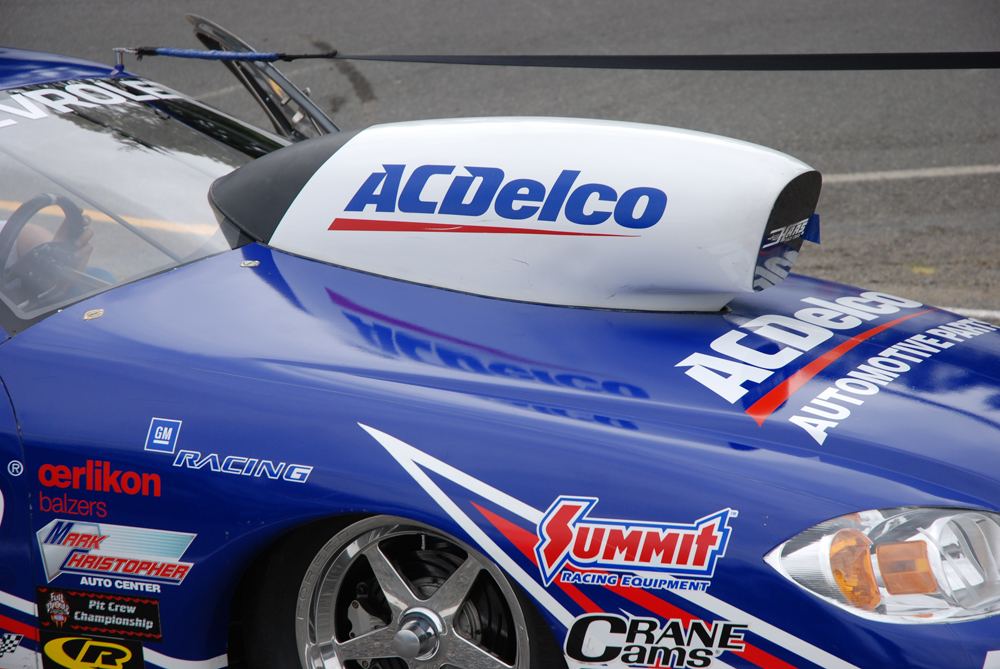
The Next Evolution
Before the 2016 rule change, Pro Stock represented the leading edge of hood scoop development.
Don Ness Racecraft was the next to push the envelope of hood scoop research. By 1983, Ness began to experiment with various hood scoop configurations that were, in essence, “square back” models loosely based on Jenkins’ original design. Ness’ advantage was that he could physically wind-tunnel test different scoop designs using GM’s facilities.
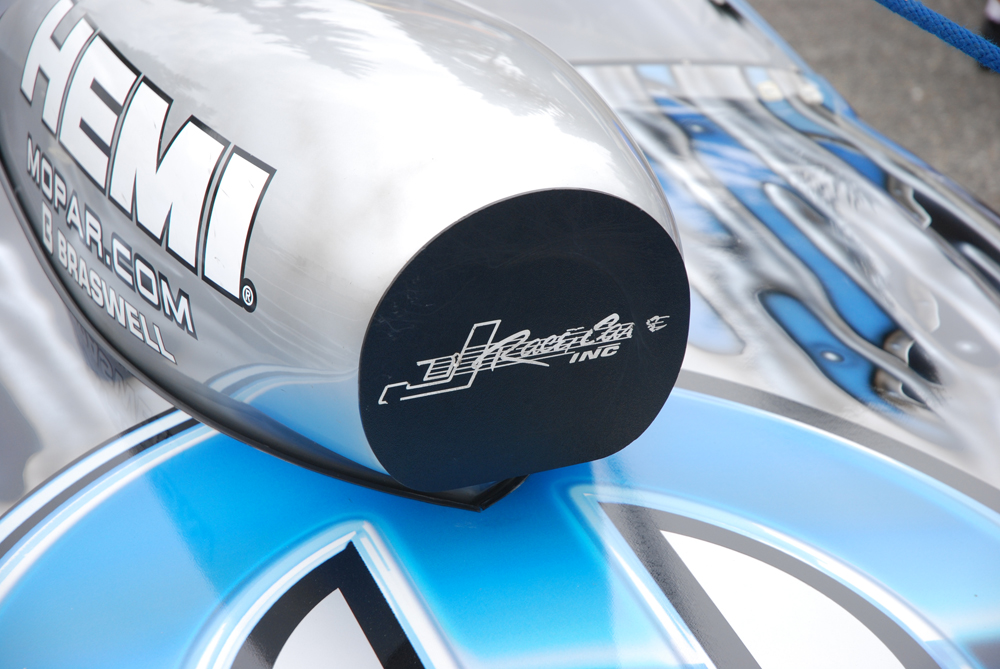
Ness used the third-generation Camaros of Reher-Morrison and Frank Iaconio as test mules for his scoops. Based on wind tunnel evaluation, Ness came up with something new—a radical NACA duct scoop which picked up flow considerably. The NACA-induction scoop was definitely radical, and the powers in NHRA land claimed “foul.” The high-tech NACA design became instantly illegal, but Ness felt the NACA scoop design was promising.
Ness also offered an interesting viewpoint on wind-tunnel testing. He noted that wind-tunnel testing is only accurate to a certain degree because the engine doesn’t run in the wind tunnel. A 500-cubic-inch engine running wide open can (and should) have a significant influence upon hood scoop design, Ness said.
The WJ Influence
Warren Johnson and his Oldsmobile factory connection were the next to push hood scoop technology. Warren’s setup was unusual in that it was very round. This scoop stretched from the base of the windshield, swung upward, creating a unique opening. The top corners were rounded, and it was fitted with a flat bottom (looking much like a modified D-shape). Wind-tunnel testing revealed the design was equal to, or better than, any previous “box” or square hood scoop. More importantly, overall drag was reduced. This particular scoop was only available to Oldsmobile-bodied racers, and was primarily developed for use in Pro Stock.
Warren Johnson influenced hood scoop technology in a big way. In his NHRA Speed Reading column, WJ provided insight into hood scoop design and the effects of cold air on horsepower and vehicle performance:
“For every 10-degree increase in air temperature, there is a 1-percent decrease in horsepower. The air under the hood of a typical street car is heated by the radiator, exhaust system, and engine. In contrast, a hood scoop supplies outside air at ambient temperature. The difference in output between a Pro Stock engine inducting 100-degree air and the same engine running on 60-degree air is approximately 4 percent, or about 48 horsepower.
“The amount of pressurization produced by a hood scoop varies as a function of the square of the speed of the vehicle. The formula for calculating pressure is:
0.0000176 x air speed in mph² = ram pressure increase in pounds per square inch (psi).
“If you plug in the numbers, you’ll find an increase in inlet air pressure of .142 psi at 90 miles-per-hour. Standard atmospheric pressure is 14.7 psi, so this represents an increase of just under 1 percent. If the air/fuel ratio is adjusted to compensate for the increased pressure, there should be a corresponding 1-percent increase in horsepower. For a 1,200-horsepower Pro Stock engine, that’s a gain of 12 horsepower. Hood scoop pressurization increases dramatically at faster speeds: It’s 2 percent at approximately 130 miles-per-hour, and 3 percent at 158 miles-per-hour. At the magical 200 mile-per-hour mark, the theoretical pressure increase is .704 psi, or 4.8 percent. That equals 56 “free” horsepower.
“Unfortunately in racing, just as in life, there is no free lunch. The penalty you pay for this increase in inlet air pressure is the extra aerodynamic drag produced by the hood scoop. A hood scoop is inherently dirty in terms of its aerodynamics. You can minimize the penalty with proper radii and contours, but you can’t get rid of it. And because the scoop has to be large enough to enclose the carburetors and intake manifold, you don’t have much latitude to change its physical dimensions and frontal area.
“From all of my calculations, it’s a wash between the increased horsepower from the ram effect and the higher aerodynamic drag produced by the hood scoop. In other words, though we gain horsepower from the increased inlet pressure, we have to use all of that power just to push the hood scoop through the air.”
Turning Back The Clock To World War II
While WJ and Oldsmobile were working on their aero scoop, there were other goings on at Pontiac.
Don Ness Racecraft, in conjunction with the Rod Shop and Pontiac, created the “Rod Shop-Pontiac scoop.” As it turns out, if you take a close look at the air intake scoop found on a vintage WWII P51 Mustang fighter plane, you can see the heritage. Make a properly sized copy and flip it upside down to fit the hood of a Pro Stock car, and you can see the similarities. It didn’t take long before this particular scoop design became standard equipment in Pro Stock. You can still see vestiges of the scoop today on drag cars (see the photos).
Like other designs, the Pontiac scoop saw plenty of wind-tunnel testing in various configurations. The overall shape of the scoop, size and shape of the opening, overall approach angle, angle of the air intake opening, and angle below the scoop opening proved critical. In some cases, airflow improved dramatically, but in others, there wasn’t much. What is done inside the scoop proves just as important as the outside shape (see the Jenkins technology above). Minor changes can sometimes be worth between one and two miles-per-hour in top speed. Much of those tweaks came with a cost—hours upon hours of expensive wind-tunnel time.
What Ness and others learned was that dimensional changes as small as ½ inch make huge differences. Ness discovered the scoops used on the 500-cubic-inch Pro Stock cars were less sensitive to fuel distribution problems than small block combinations. And when single, four-barrel Competition Eliminator cars were factored into the equation, it actually became more difficult to design the proper scoop.
Another consideration is the type of carburetor used. Pro chassis builder Jerry Bickel came up with several scoop configurations based on carb layout. NHRA Pro Stock cars, for example, incorporate conventional Dominator-series carburetors. Bickel’s cars use a slim aero-style scoop with a reduced frontal area, but this particular scoop cannot be used with split Dominators (IHRA mountain motors), which require a wider scoop. Basically, what works on a 500-cubic-inch combination won’t work on a mountain motor. And what works on a mountain motor won’t work on a carbureted Pro Mod.
So what does it all mean?
Simple. Today’s hood scoops are as much a part of the overall combination as cylinder heads, for example. There really isn’t any scoop perfect for any car. Instead, it’s a good idea to contact the scoop manufacturer to get recommendations for a specific vehicle.
A scoop isn’t a supercharger. It can improve the performance of your car, but there are limitations. And there’s certainly more to hood scoop technology than first meets the eye.
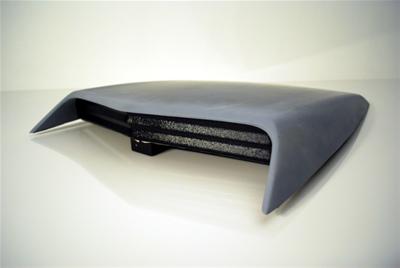
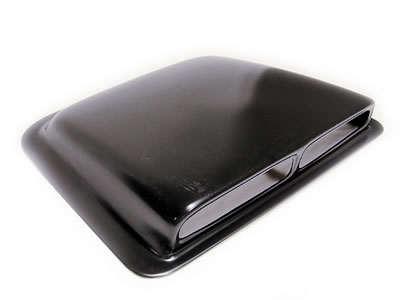

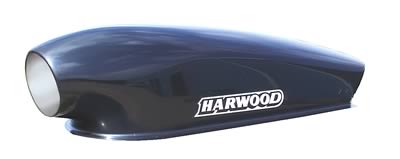
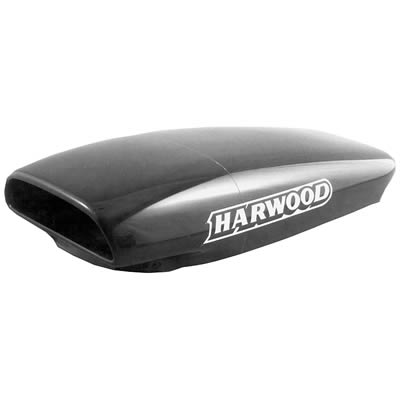
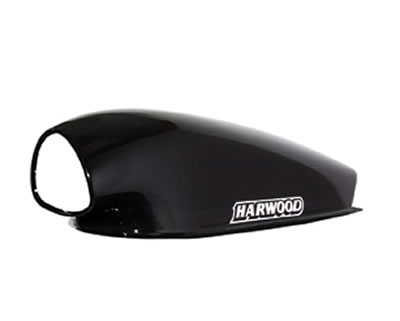

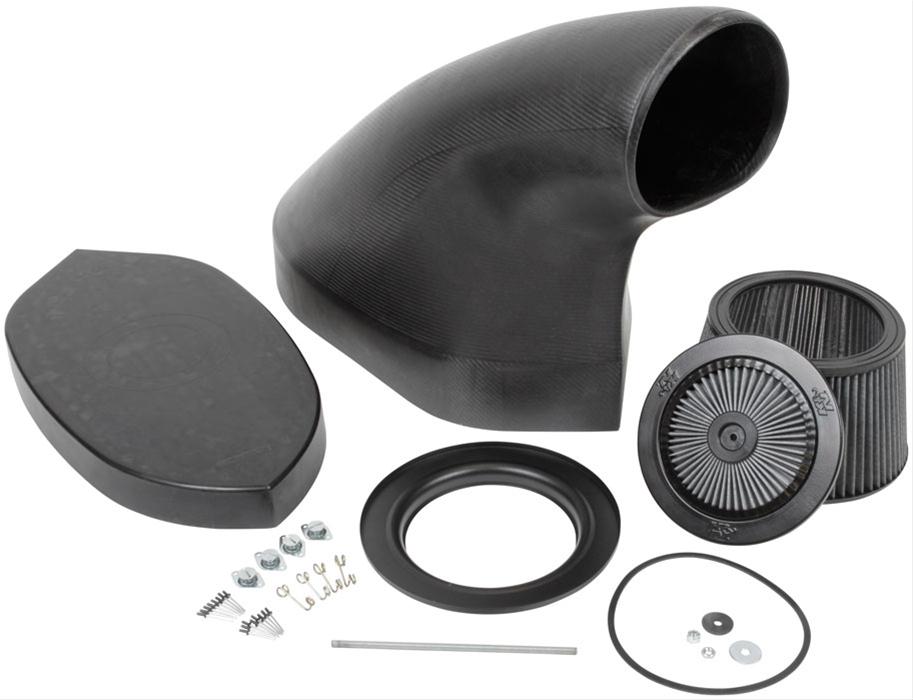
***

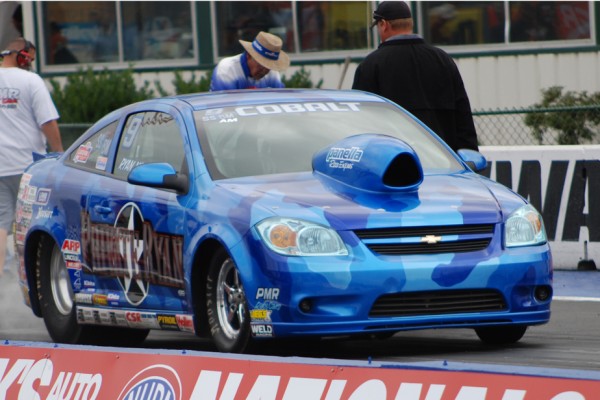
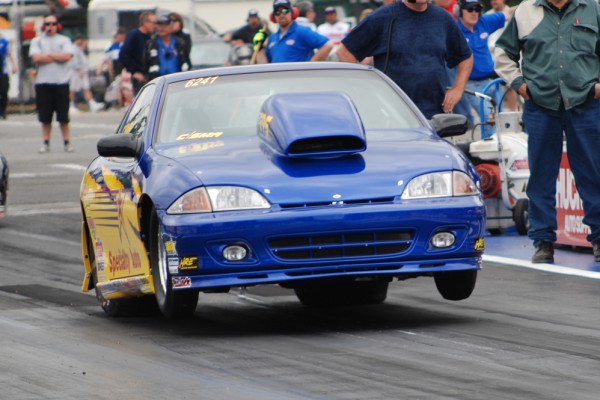












Outstanding keep giving us more info I enjoy reading the tech. Great job keep sending more stuff
WAY TO GO WAYNE, the amount of information is something gear-heads can bench-race for a long time !!!!! Now that you have scratched the surface….more research is needed into the world of formula one air inlet design,and the vortex effect. Also,Don Carlton spent many hours in wind – tunnel testing with nasa engineers ,way back in the day !!!!!!!!!!!!!!!!!! Keep these Hi-tech articles,please ??????????????????????????????????????????
Mopar motorsports are all about total domination in competition,too be the fastest,is the bottom-line,and….without this absolute;no guts , no glory !!!!In order too rule the roost, you need brute horse-power,no doub’t about it.Youre article on hood scoops is very complex;here are a few thoughts on this tantalising issue:Drag-force&down force are proportional to the square of car velocity,the formula goes something like this :fdrag =0.5Cdav2,fdrag-aerodynamic drag,cd-coefficient of drag D-density,A frontal area,V-object velocity,and….as we all know from physics class 101 ,cd is the true coefficient of total drag,newton’s-law states that this is all-ways determined by shape and total angle of attack!!!Furthermore….You’re thoughts of Bill Jenkin’s and Warren Johnson’s SHADE-TREE ENGINEERING ,pales in contrast too Don Carlton,the Mo-Town Missile crew,and N.A.S.A. engineers effort in hood scoop development,so…..in light of this cast of facts,you might better check you’re self ?????????????????????????????????????????????????
Mopar or No Car! Building a fresh air set up now! 18x3cake pan, offset air cleaner base, ect
Let the teams choose what ever induction system they want. Way to many politics! let them be diverse!!
[…] boundary layer. Most hood scoops are purely aesthetic. This article explains hood scoop science:The Straight Scoop: Exploring the Science Behind Hood Scoop Design – OnAllCylinders googletag.cmd.push(function() { googletag.display("ChallengerTalk_com_1x1_Zedo_AUTO_Forum"); […]
Your never to old or smart to learn at 75 i really enjoy reading the Summit articles keep up the good work guys.
All i can say is back in the 70s when i tried a scoop on my car tunnel ram 2 4it ran faster worth every effort
I want to get the dart or demon duster 1970 73 style scoops show me a good catal
I’m building a dual snorkel sealed system for my 340 Duster. I can give you specs
Great article. We have a 69 vette with a 572 and running with no hood..lol. id really like to modifiy the 427 hood to fit the tall deck 572 but now im not sure what would be best for scoop fit . Any suggestions welcome…
[…] Hood scoop pressurization increases dramatically at faster speeds: It's 2 percent at approximately 130 miles-per-hour, and 3 percent at 158 miles-per-hour. At the magical 200 mile-per-hour mark, the theoretical pressure increase is . 704 psi, or 4.8 percent. That equals 56 “free” horsepower. via […]
Pictures would have been a GREAT ADDITION.
Thanks
Hey Eric, there was a full slideshow at the top of this article—but admittedly it can be easy to overlook, so we took out the images and re-embedded them into the story for a better presentation. Thanks for reading and we hope this helps.